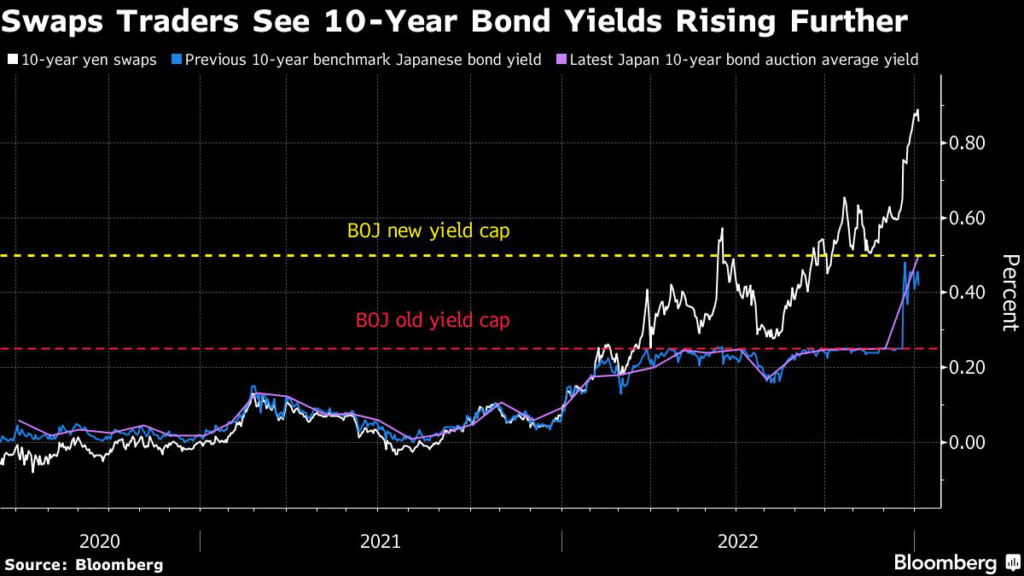Bank of Japan officials see little need to rush to make another big move to improve bond market functioning, and the BOJ should assess the impact of last month’s yield adjustments for now, according to people familiar with the matter.
(Bloomberg) — Sign up for the New Economy Daily newsletter, follow us @economics and subscribe to our podcast.
Bank of Japan officials see little need to rush to make another big move to improve bond market functioning, and the BOJ should assess the impact of last month’s yield adjustments for now, according to people familiar with the matter.
The central bank will make any further policy decisions after looking at the economy and financial markets until the last minute ahead of the January meeting, according to the people. But the view that there is a need to study the effects of December’s changes indicates the bank isn’t seeking back-to-back action for now.
The surprise decision in December has generated speculation that the central bank may choose to adjust policy again this month without warning. The BOJ’s next policy meeting will conclude on Jan. 18.
Following news that the BOJ may not be in a rush to make further changes, the yen weakened to around 134.40 from around 133.90 against the dollar. The benchmark Topix index also briefly made gains following the news.
Read More: BOJ Under Renewed Pressure to Defend Its New Yield Ceiling
BOJ officials see traders still digesting the impact of the central bank doubling its 10-year yield target range to 0.5 percentage points either side of zero, according to the people. Volatility in the bond market may remain high for some time, they said.
The central bank has ramped up its bond purchases in recent weeks to fight back against a continued rise in yields. Japan’s new benchmark 10-year government note traded at the BOJ’s new 0.5% ceiling on Friday.
A sustained rise above that level risks leading to runaway speculation that the BOJ will raise its yield ceiling further or abandon its policy of negative short-term interest rates. Japan’s swap rates show traders already expect further tweaks.
Meanwhile, the yen’s two-month rally from its October low is coming under threat after the currency slipped below a key support level, a move which extended on Friday afternoon in Tokyo.
It’s too early for the BOJ to come to a conclusion on the impact of last month’s yield curve changes, as the past few weeks also included the holiday season, people familiar with the matter said. The BOJ can also buy bonds aggressively and use various market operation tools to show they’re continuing its easing policy, they said.
A similar sentiment applied to judging the condition of corporate bond issuance, a key factor behind the BOJ’s decision to widen the yield band, the people said.
For the quarterly economic projections, BOJ officials see the momentum of passing costs onto consumers is stronger than expected when the latest price outlook was made in October, people with knowledge of the matter said.
It’s likely that the bank will raise its inflation forecasts for every projection year through fiscal 2024, the people said. The government measure to cut utility bills would cause some ups and downs in their forecast and there is a chance that fiscal 2024 may reach 2% or above due to technical factors, they said.
While Japan’s economy is recovering toward a virtuous economic cycle, officials continue to view that it’s hard to be confident about achieving the BOJ’s sustainable 2% inflation target for now, the people said.
–With assistance from Cormac Mullen, Matthew Burgess and Masaki Kondo.
(Updates with more background, market reaction)
More stories like this are available on bloomberg.com
©2023 Bloomberg L.P.










